You need to select materials for a large cabinet order. The options are overwhelming—solid wood, plywood, MDF, particleboard—and making the wrong choice could lead to warping, sagging, and unhappy clients, destroying your project’s budget and timeline.
The best kitchen cabinet material is a balance of your project’s budget, style, and environment. Plywood boxes offer the best all-around durability, while the door material—MDF for paint, solid wood for a classic look, or melamine for cost-effectiveness—should match your specific needs.
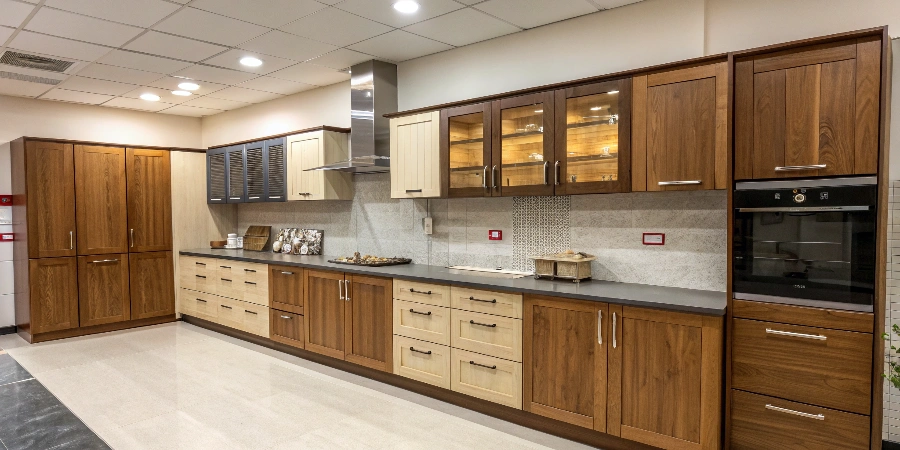
From my position as a furniture manufacturer in Foshan, I see buyers struggle with this question every day. They often come to me asking for the "best" material, but that’s the wrong question. It’s like asking what the best vehicle is. A sports car is great, but not for hauling construction materials. The conversation shouldn’t be about a single "best" material, but about finding the most appropriate material for a specific application. A luxury villa in a dry climate has very different needs than a high-humidity coastal hotel. For my B2B clients, getting this choice right is the foundation of a successful, profitable project.
Which material is most durable for kitchen cabinets?
You can’t afford to have your project’s cabinets fail. You need materials that resist sagging shelves, hold screws tightly, and won’t fall apart from a bit of water, protecting your reputation.
Plywood is the most durable material for cabinet boxes. Its cross-laminated construction gives it superior structural strength and moisture resistance compared to particleboard or MDF, ensuring shelves stay straight and hardware stays attached.
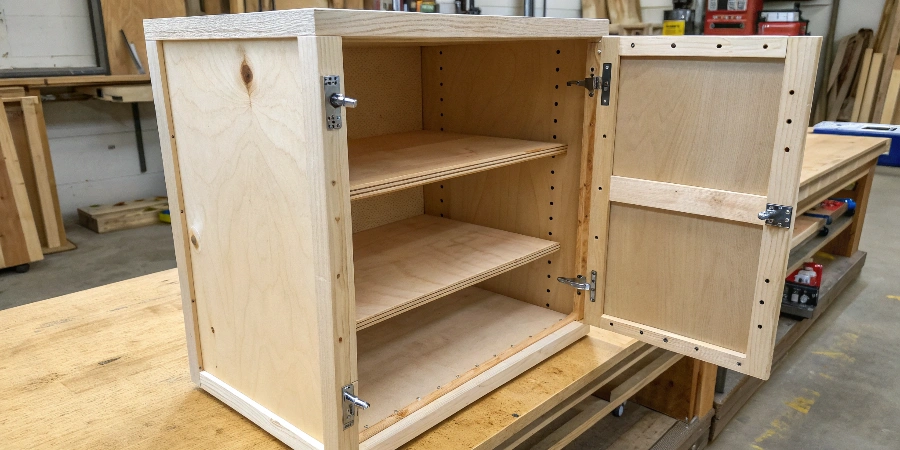
When we talk about durability, we are usually talking about the cabinet box1, or "carcass." This is the unseen foundation of your kitchen. From a manufacturing perspective, plywood2 is the undisputed champion for building a strong and lasting cabinet box1. It is made by gluing together multiple thin layers of wood veneer, with the grain of each layer running perpendicular to the next. This cross-grain structure makes it incredibly resistant to bending, warping, and shrinking. It also provides excellent screw-holding power, which is critical for door hinges and drawer slides that will be used thousands of time. While solid wood is strong, it can warp with changes in humidity. Particleboard is cost-effective, but it is prone to sagging under heavy loads and can swell irreversibly if water gets past its melamine coating. For a project that demands reliability, a plywood2 box is the professional’s choice.
What’s the best overall material for kitchen cabinets?
You want a simple, reliable answer to standardize your projects. The endless debate between different materials online is confusing and makes it hard to specify a go-to solution for your builds.
The best overall approach is a hybrid one: use plywood for the cabinet boxes for its durability and moisture resistance, paired with MDF doors for perfectly smooth painted finishes. This combination offers quality, aesthetics, and value.
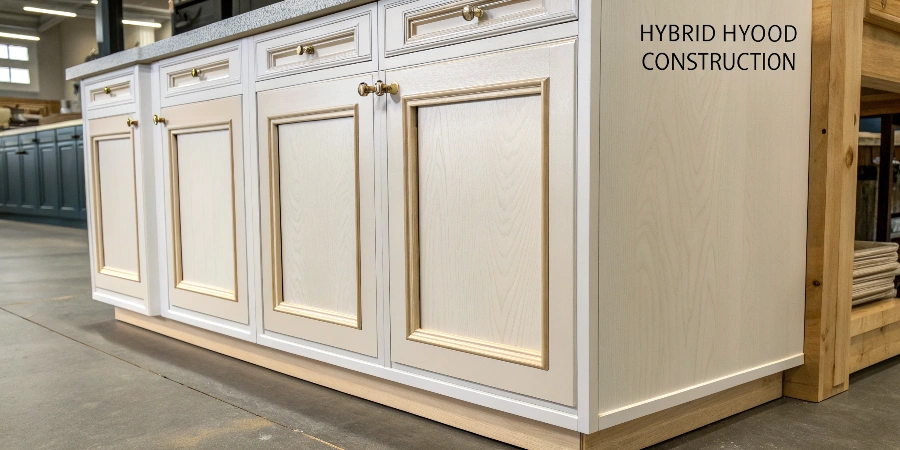
There is no single "best" material, but there is a "best combination" for most projects. For any B2B buyer like Jacky who is managing large-scale residential or commercial projects, the smartest specification is a plywood cabinet box3. It’s the safe, high-quality foundation that prevents 90% of future problems.
Once you have that solid foundation, you can choose your door material based on the desired look and budget.
- For a sleek, modern, painted look: High-Density MDF4 is the perfect choice. Its surface is perfectly smooth and stable, without any wood grain to show through the paint. This allows for a flawless lacquer or paint finish.
- For a traditional, high-end look: Solid wood doors are classic. They offer natural beauty, but you must account for a higher cost and sensitivity to humidity.
- For budget-driven projects: Melamine-faced particleboard doors are highly durable, scratch-resistant, and come in a huge variety of colors and textures.
This hybrid approach gives you the best of all worlds: a durable, long-lasting structure with a beautiful, project-appropriate finish.
What are the best quality kitchen cabinets made from?
You want to offer a truly premium product. You need to know what materials and construction methods define top-tier, luxury kitchen cabinets that justify a higher price point.
The highest quality kitchen cabinets are typically made from thick, furniture-grade plywood for a sturdy box, combined with solid hardwood or high-density fiberboard (HDF) doors, premium hardware, and expert finishing techniques.
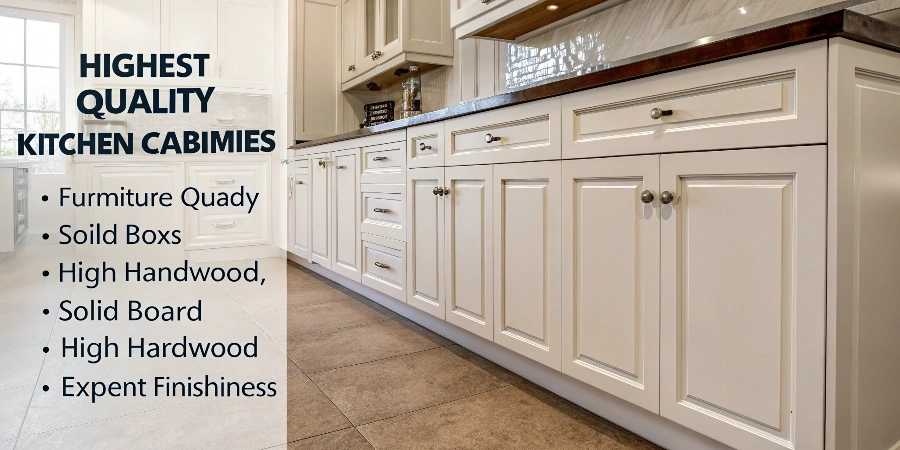
"Quality" in the cabinet world is a combination of materials and craftsmanship. It starts with the box. The best cabinet boxes are made from 3/4-inch (18mm) thick plywood with a real wood veneer interior, not a thin paper laminate. The joints are not just stapled but are often dovetailed or use dadoes for maximum strength.
For the doors, "best quality" can mean two things. For a stained wood look, it means solid hardwood frames with a solid wood or plywood center panel to allow for natural expansion and contraction without cracking. For a painted finish, the highest quality material is actually HDF (High-Density Fiberboard5). HDF is even more stable and dent-resistant than MDF, providing the ultimate substrate for a flawless, long-lasting lacquer finish. Finally, true quality is in the details: soft-close hinges6 and drawer slides from trusted brands like Blum or DTC, and meticulous, multi-layer finishing processes that are done in a dust-free environment.
What are the best kitchen cabinets for high humidity?
You are building in a coastal area or a region with high humidity. You are very concerned about materials swelling, warping, or growing mold, leading to costly replacements.
For high-humidity environments, plywood is the undisputed best material for cabinet boxes due to its structural stability. These should be paired with either solid wood doors built for humidity or high-quality, factory-sealed HDF/MDF doors.
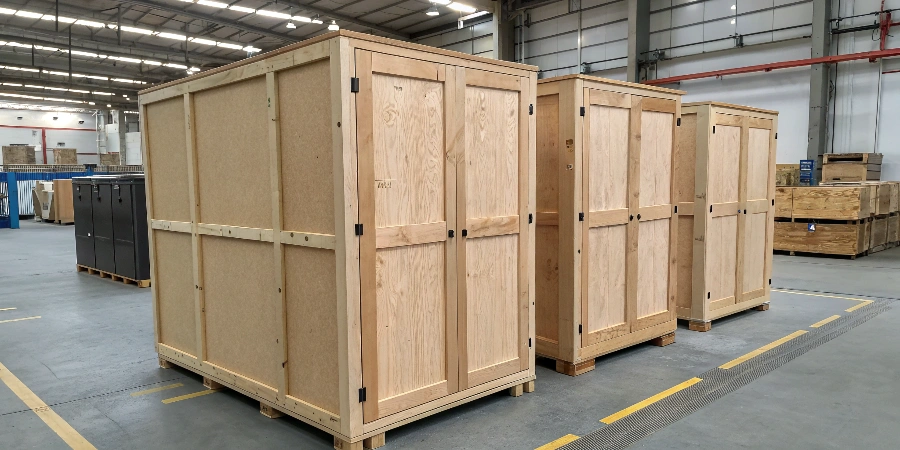
Humidity is the ultimate enemy of kitchen cabinets7. This is where material selection becomes absolutely critical. Standard particleboard is a major risk in these environments. If the outer melamine layer gets a small chip or scratch, moisture can seep into the raw particleboard core, causing it to swell up like a sponge. This damage is irreversible.
Plywood is the superior choice because its layered construction makes it inherently more stable and water-resistant. Even if it gets damp, it is far less likely to swell or delaminate. For the doors, you also need a smart approach. While it seems counterintuitive, solid wood can be problematic if not constructed properly, as it will expand and contract significantly. A well-constructed solid wood door with a floating center panel can manage this. However, often a better choice is a premium HDF door that has been professionally sealed with a high-quality, water-resistant lacquer8 on all six sides—including the top, bottom, and back. This complete sealing process creates an impermeable barrier that is essential for long-term survival in a damp climate.
Conclusion
The best cabinet material isn’t about one single answer. It is about understanding the project’s specific needs and finding the right balance between durability, aesthetics, and budget with a trusted factory partner.
-
Understanding cabinet box durability is crucial for ensuring a long-lasting kitchen. Explore this link to learn more about its significance. ↩ ↩
-
Plywood’s unique properties make it ideal for cabinet boxes. Discover why professionals prefer it over other materials. ↩ ↩
-
Explore the advantages of plywood cabinet boxes for durability and quality in your projects. ↩
-
Learn why High-Density MDF is ideal for achieving a sleek, modern finish in cabinetry. ↩
-
Explore the advantages of HDF for cabinetry, including its stability and durability, ensuring a long-lasting finish. ↩
-
Learn about soft-close hinges to enhance your cabinetry’s functionality and longevity, providing a quieter and smoother operation. ↩
-
Explore this link to discover the best materials for kitchen cabinets that can withstand humidity and prevent damage. ↩
-
Learn how water-resistant lacquer can enhance the durability of kitchen cabinets, ensuring they last longer in humid conditions. ↩
